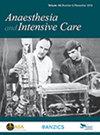Prediction of hypofibrinogenaemia based on the starting fibrinogen and extent of haemodilution during cardiac surgery.
IF 1.1
4区 医学
Q3 ANESTHESIOLOGY
引用次数: 0
Abstract
It is now recognised that correction of hypofibrinogenaemia is a priority in the management of coagulopathic bleeding, once drug-related causes have been reversed as far as possible. 1,2 Correction of low fibrinogen levels has also been shown to improve clot strength in the presence of thrombocytopenia. 2,3 For this reason, an additional alert to the likelihood of hypofibrinogenaemia may help clinicians to improve coagulation management, by prompting them to measure the fibrinogen level, and replace fibrinogen in a timely manner if nec-essary. We reasoned that such an alert could be obtained by considering the preoperative fibrinogen level and the extent of haemodilution pertaining at any particular stage of a procedure. This reasoning is based on the fact that fibrinogen is a large molecule, which under normal circumstances is confined to the intravascular space in the same way as haemoglobin. 4,5 Moreover, normal levels are not restored immediately, but instead occur over several hours. 6,7 Therefore, any reduction in the haemoglobin level caused by blood loss and its replacement with non-sanguineous fluid should be accompanied by a similar or greater proportional reduction in the fibrinogen level, assuming no blood products have been administered. We根据心脏手术中起始纤维蛋白原和血液稀释程度预测低纤维蛋白原血症。
本文章由计算机程序翻译,如有差异,请以英文原文为准。
求助全文
约1分钟内获得全文
求助全文
来源期刊
CiteScore
2.70
自引率
13.30%
发文量
150
审稿时长
3 months
期刊介绍:
Anaesthesia and Intensive Care is an international journal publishing timely, peer reviewed articles that have educational value and scientific merit for clinicians and researchers associated with anaesthesia, intensive care medicine, and pain medicine.

 求助内容:
求助内容: 应助结果提醒方式:
应助结果提醒方式:


